Complies with Part 15 of the FCC rules. Operation is subject to the following two conditions: (1) this device may not cause
harmful interference, and (2) this device must accept any interference received, including interference that may cause undesired
operation.
I
NDUSTRY
C
ANADA
(ICES-003)
This Class B digital apparatus meets all requirements of the Canadian Interference-Causing Equipment Regulations.
A
VIS
DE
CONFORMITÉ
À
LA
RÉGLEMENTATION
D
’I
NDUSTRIE
C
ANADA
Cet appareil numérique de la classe B est conform à la norme NMB-003 du Canada.
I
NDUSTRY
C
ANADA
(CS-03)
The Load Number of this modem is 0.0. The standard connecting arrangement code for this equipment as specified in CP-01,
Section 1.8.3 is CA11A.
The Ringer Equivalence Number (REN) assigned to each terminal device provides anindication of the maximum number of
terminals allowed to be connected to a telephone interface. The termination on an interface may consist of any combination of
devices subject only to the requirement that the sum of the Ringer Equivalence Numbers of all the devices does not exceed 5.
The Industry Canada label identifies certified equipment. This certification means that the equipment meets certain
telecommunications network protective, operational and safety requirements as prescribed in the appropriate Terminal
Equipment Technical Requirements document(s). The Department does not guarantee the equipment will operate to the user’s
satisfaction.
Before installing this equipment, users should ensure that it is permissible to be connected to the facilities of the local
telecommunications company. The equipment must also be installed using an acceptable method of connection. The customer
should be aware that compliance with the above conditions may not prevent degradation of service in some situations.
Repairs to certified equipment should be coordinated by a representative designated by the supplier. Any repairs or alterations
made by the user to this equipment, or equipment malfunctions, may give the telecommunications company cause to request
the user to disconnect the equipment.
Users should ensure for their own protection that the electrical ground connections of the power utility, telephone lines and
internal metallic water pipe systems, if present, are connected together. This precaution may be particularly important in rural
areas.
CAUTION: Users should not attempt to make such connections themselves, but should contact the appropriate electric
inspection authority, or electrician, as appropriate.
S
AFETY
This modem has been tested and certified according to the following safety standards and is intended for use only in
Information Technology Equipment which has been tested and certified to these or other equivalent standards:
■
UL Standard 1950 (3rd Edition)/ CSA C22.2 No. 950
■
IEC 60950
■
EN 60950
CAUTION: To reduce the risk of fire, use only No. 26 AWG or larger telecommunication line cord.
CE N
OTICE
This device complies with the requirements of European Directive 1999/5/EC.
The safety status of the ports on this modem is as follows:
■
Line Interface Port - TNV
■
PCMCIA Bus connector to PC - SELV
Note that only SELV ports should be connected to other SELV ports or TNV ports to other TNV ports. Interconnection of ports
with different safety status may invalidate the approval. If in doubt about making such a connection, advice should be sought
from a competent engineer.
The user should ensure that the power drawn by the modem, together with the host and any auxiliary apparatus drawing
power from the host is within the rating of the power supply.
The modem power requirement is: +5V @ 120 mA.
The user should be aware that it is the modem and not the host that is approved.
When the modem is supplied along with a host machine, the modem user instructions must also be supplied. Failure to do so
will invalidate the modem approval.
Please consult the supplier or maintainer of the modem, not the network operator, if operational difficulties are experienced.
Tested To Comply With FCC Standards
FOR HOME OR OFFICE USE



































